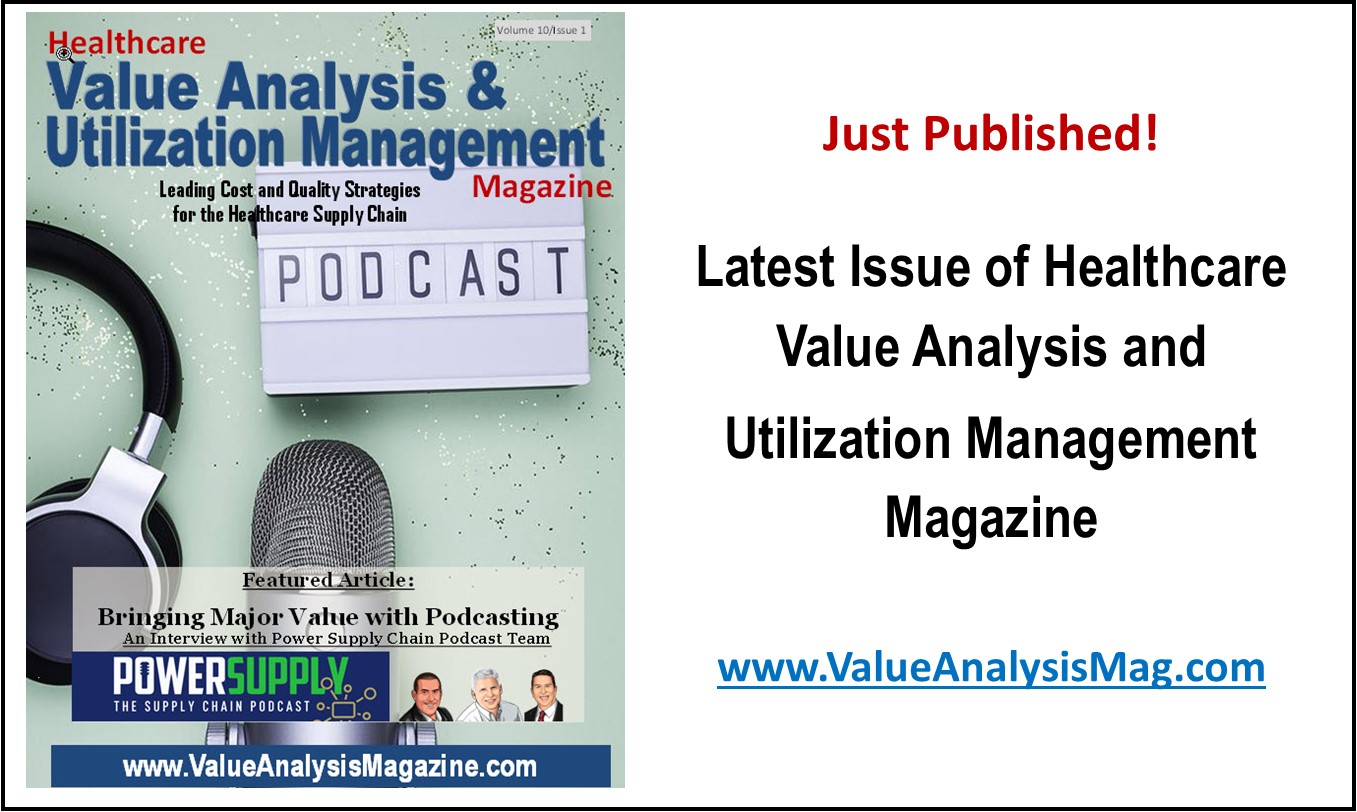Robert T. Yokl, President/CEO, SVAH Solutions
If you are honest with yourself, you know that your price and standardization savings are slowly disappearing. Yet, your healthcare organization still needs to save millions of dollars annually just to keep pace with inflation. With this said, I’m sure you realize that your hospital, system, or IDN’s senior management is looking to the supply chain for even more savings this year due to the negative effects of the pandemic on their bottom line.
Moving To The Next Level Of Savings Performance
Unfortunately, these new supply chain savings won’t be achieved with price and standardization alone. New sources of savings must be discovered to bridge your savings gap created by the erosion of your price and standardization savings. To this end, it’s been our observation that most healthcare organizations are throwing darts at an elusive and moving target to find their clinical supply utilization savings, and with meager results. This is because most hospitals, systems, and IDNs aren’t employing a scientific approach to identify their clinical supply utilization misalignments (CSUM). That’s where clinical supply utilization analytics come into play. It’s the art and science of measuring trends, patterns, anomalies, and variations in your supply stream to quickly identify your CSUM savings opportunities, thereby, moving to the next level of savings performance.
Competing With The Right Analytics
Thomas H. Davenport, the author of Competing on Analytics, describes analytics as “the extensive use of data, statistical and quantitative analysis, explanatory and predictive models, and fact-based management to drive decisions and actions.” What Davenport is saying, in layman’s terms, is that if you organize your supply spend into standardized descriptive categories (e.g., IV sets, dressings, Oxisensors, etc.) and then measure these same commodity groups by their Activity-Based performance, your CSUM savings opportunities will quickly appear before your eyes.
For example, we identified that one of our client’s wound care utilization was 34% over their peer’s metrics (or $51,000) on an annualized basis. It’s no accident that we uncovered this wound care savings and 96 other utilization misalignments for this same client. It’s because we employed Activity-Based Analytics to do the difficult work for us that never would have been uncovered by the naked eye or intuition.
Never Miss a CSUM Savings Again
Because some of our clients have employed our Activity-Based Analytics for several years, we are able to trend their expenses over a two or three-year period, thereby identifying additional savings opportunities that they weren’t aware were available to them. Since “things change and people change”, this always brings about new CSUM savings opportunities when you know how to look at your data retrospectively.
This was the case with a 98-bed hospital we worked with that reduced their contrast media cost by $42,632 the first year after we identified this utilization misalignment. Then, this same hospital had to revisit this same commodity two consecutive years thereafter when its contrast media utilization cost spiked repeatedly. The reason for these lapse in protocol was that the hospital’s radiology staff kept falling back to their old bad habits and had to be reeducated about the best practices that were keeping their contrast media costs in line in the first place.
It is a worthwhile effort for you to refresh and trend all of your expense data on a monthly basis to ensure that your utilization trends, patterns, and variations are within acceptable limits and have not spun out of control. Keep in mind, the reversal in your clinical supply utilization performance can easily happen, especially when your healthcare organization’s census has large variances.
CSUM Is a New and Emerging Best Practice
Clinical supply utilization management is a new emerging best practice you should strongly consider as a new savings source to further reduce your supply costs – beyond price and standardization. All you need to get started is to develop or outsource your Activity-Based Analytics platform to make your savings job easier.
It should also be noted that since your value analysis team members have limited time for value analysis and utilization studies, their energies can’t be needlessly wasted on dry holes. That’s why your utilization savings candidates must be real, quantifiable, and irrefutable before you even consider them as targeted savings opportunities.
So, if you are looking to up your savings game, Activity-Based Analytics is the correct path to follow on your journey to never-ending and repeatable new savings, now and in the future for your healthcare organization.
| About Robert T. Yokl, Founder & Chief Value Strategist for SVAH Solutions |
|---|
| Robert T. Yokl is President and Chief Value Strategist at SVAH Solutions. He has four decades of experience as a healthcare supply chain manager and consultant, and also is the co-creator of the Clinitrack Value Analysis Software and Utilizer Clinical Utilization Management Dashboard that moves beyond price for even deeper and broader clinical supply utilization savings. Yokl is a member of Bellwether League’s Bellwether Class of 2018. https://www.SVAH-Solutions.com https://www.SavingsValidator.com |
Articles you may like:
What is the Future of Healthcare Value Analysis and the Potential Moving Forward?





